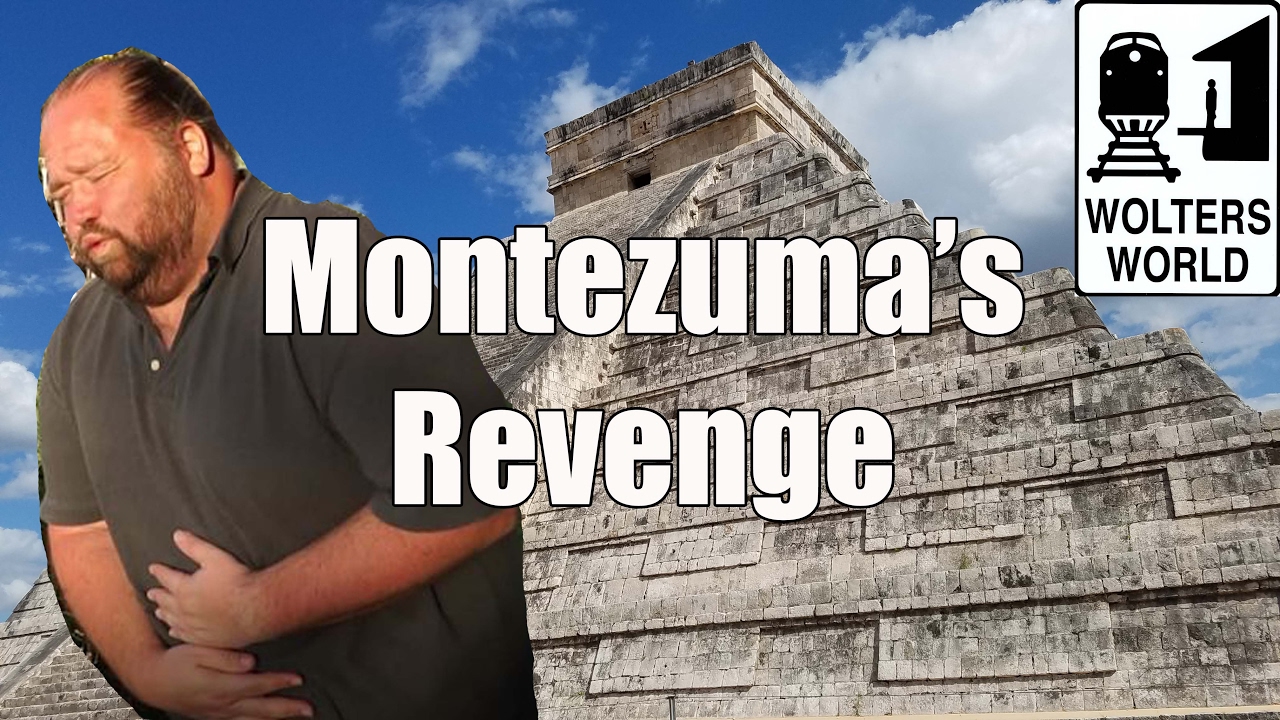ontezuma’s Revenge

Montezuma’s Revenge, a term often whispered with trepidation among travelers, conjures images of uncomfortable moments spent in the throes of gastrointestinal distress. It’s a colloquial term for traveler’s diarrhea, a common ailment experienced by those journeying to regions where food and water hygiene standards may differ from what they are accustomed to. This phenomenon is not merely an inconvenience but has historical, cultural, and scientific dimensions that are worth exploring.
Understanding Montezuma’s Revenge: Montezuma’s Revenge derives its name from the Aztec emperor Montezuma II, who reigned over the mighty Aztec Empire during the early 16th century. Legend has it that Montezuma, in his attempts to repel Spanish conquistadors led by Hernán Cortés, poisoned their drinking water, leading to their downfall. Whether this tale is factual or mythical, the association between Montezuma and revenge became entrenched in popular culture, especially among travelers who fell victim to gastrointestinal illnesses in Mexico and other regions.
Table of Contents
ToggleThe Culprit:
Traveler’s diarrhea, including Montezuma’s Revenge, is primarily caused by the ingestion of food or water contaminated with bacteria, viruses, or parasites. The most common bacterial culprit is Escherichia coli (E. coli), particularly strains such as E. coli O157:H7 and Enterotoxigenic E. coli (ETEC), which produce toxins leading to gastrointestinal symptoms.
Contaminated water sources, inadequate food handling practices, and poor sanitation contribute to the proliferation of these harmful microorganisms. Regions with tropical or subtropical climates, where bacteria thrive, pose a higher risk to travelers.
Symptoms and Impact:
The onset of Montezuma’s Revenge is swift and unforgiving. Travelers may experience a range of symptoms, including abdominal cramps, nausea, vomiting, fever, and, most notably, frequent watery diarrhea. These symptoms can vary in intensity, with some individuals experiencing mild discomfort while others face more severe complications.
Aside from the physical discomfort, traveler’s diarrhea can disrupt travel plans, leading to missed experiences, canceled excursions, and a general sense of frustration. Moreover, severe cases may result in dehydration, requiring medical attention and potentially leading to hospitalization, especially in vulnerable populations such as young children and the elderly.
Preventive Measures:
While the prospect of Montezuma’s Revenge may instill fear in travelers, there are proactive measures to minimize the risk of falling victim to this unpleasant condition:
- Hygiene Practices: Practicing good hygiene is paramount. This includes frequent handwashing with soap and water, especially before eating or handling food, and after using the restroom. Additionally, using hand sanitizers containing at least 60% alcohol can serve as an effective alternative when access to soap and water is limited.
- Safe Eating and Drinking: Be cautious about what you eat and drink. Stick to bottled or purified water and avoid consuming ice cubes made from tap water. Opt for hot, freshly prepared foods and avoid raw or undercooked dishes, particularly meat, seafood, and dairy products, which are more prone to contamination.
- Avoid Risky Behaviors: Exercise caution when engaging in activities that may increase the risk of contamination, such as swimming in untreated water or consuming food from street vendors whose hygiene practices may be questionable.
- Medication and Vaccination: In consultation with a healthcare professional, consider preventive measures such as vaccination against common pathogens responsible for traveler’s diarrhea. Additionally, certain medications, such as antibiotics or antidiarrheal drugs, may be prescribed as a precautionary measure for high-risk travelers.
Cultural and Historical Significance:
Beyond its medical implications, Montezuma’s Revenge holds cultural significance, serving as a reminder of the interconnectedness of travel, history, and human experience. The term itself reflects a blend of historical lore and contemporary realities, encapsulating centuries-old narratives within a modern travel context.
Moreover, the prevalence of traveler’s diarrhea in specific regions underscores broader socio-economic and infrastructural challenges related to water and sanitation. Addressing these issues not only reduces the incidence of Montezuma’s Revenge but also promotes public health and enhances the overall travel experience for visitors and locals alike.
Conclusion:
Montezuma’s Revenge, though often portrayed humorously or with a hint of dread, is a serious concern for travelers venturing into unfamiliar territories. By understanding the underlying causes, implementing preventive measures, and appreciating its cultural and historical dimensions, travelers can mitigate the risk of encountering this unpleasant ailment. Ultimately, fostering awareness and prioritizing hygiene and safety ensure that journeys are memorable for the right reasons, rather than being overshadowed by gastrointestinal woes.





